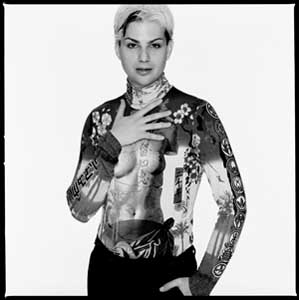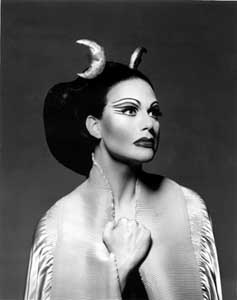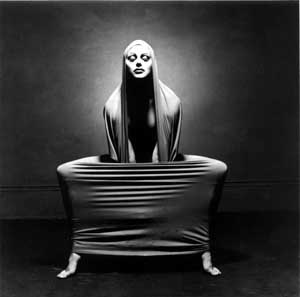Arts & Entertainment
Martha ‘Moves’ in
Published Thursday, 24-Feb-2005 in issue 896
La Jolla Music Society’s American Movement Festival: Celebrating Martha Graham and Aaron Copland is imminent. The extravaganza formerly known simply as the Martha Graham & Aaron Copland Festival is rife with large and small performances, luncheons and lectures, and it all happens between Monday, Feb. 28 and Saturday, Mar. 12.
In the “Large” category are performances by the Martha Graham Dance Company at Copley Symphony Hall March 11 and 12. Both feature Aaron Copland’s Appalachian Spring, written for Graham by Copland – the dean of gay American composers – in 1944. Also on the program Friday night, gay composer Gian-Carlo Menotti is represented by Errand into the Maze. Saturday�night, Menotti’s longtime lover, Samuel Barber, is represented with Cave of the Heart, Deep Song and Lamentation.
In the “Small” category there are two events of special interest to the GLBT community: the one-person show titled Martha@, starring decidedly gay artist Richard Move as Graham, and Christopher Herrmann’s extraordinary Graham homage/biopic, Ghostlight, also starring Move as Martha. There are six performances of Martha@ at the Lyceum Theatre March 3-6. Ghostlight is screened at 5:00 p.m. Monday, Feb. 28, at UC San Marcos. In addition, The La Jolla Music Society, San Diego Dance Alliance, FilmOut San Diego and Landmark Hillcrest Cinema are screening Ghostlight at 7:00 p.m. Tuesday, March 1, at Hillcrest Cinemas. Richard Move will be present.
Talking with Richard Move
Gay & Lesbian Times interviewed the loquacious and articulate Move by phone. He lives in Midtown Manhattan, “just a block from Times Square and 40 stories up.”
We knew better than to ask his age. He’s been quoted elsewhere that “a lady never tells.”
Move was born in New York City and raised in a rural area of Virginia, “near a little town called Fredericksburg.” Seat of colonial culture, Fredericksburg is about an hour out of Washington, D.C., where Move’s parents were government workers. He was a very creative child, studying violin by the Suzuki method and competing as a gymnast.
When he was a sophomore, Move’s high school instituted a performing arts program. He became deeply involved in both theater, and dance and discovered a tiny dance studio in downtown Fredericksburg as well. They had one modern dance class.
“I was getting the impression that I was a modern person, so I thought, ‘Oh. I’ll take that.’ The class was taught by a stunning beauty named Margaret Anne Moss, a proper Southern lady who was a disciple of Helen McGehee [principal dancer for 30 years in the Martha Graham Dance Company].
“So there I was, probably 15, doing Graham technique for my very first dance class ever. I was young and impressionable and fell in love with the kind of poetic, spiritual approach to the exercises and imagery that this very striking and severe woman was using.”
Move’s teacher took the kids to Washington and Richmond, where they saw performances by Graham troupe plus Pina Bausch, Martha Clarke, Meredith Monk and Ping Chong. During his senior year, Move was accepted into an elite literature course at the Folger Shakespeare Library. He went to Hobart and William Smith Colleges on a drama scholarship, then having decided to focus on dance, he transferred to Virginia Commonwealth University, where he received his BFA. Each summer he studied at the American Dance Festival (ADF) at Duke University.
“I followed my heart, that’s for certain.” After a final summer at ADF, Move moved to New York, where he danced with Mark Dendy and Pooh Kay’s Eccentric Motions, and – most influentially – with a performance group called DanceNoise.
“They were this great team that came out of the ‘80s interdisciplinary performance art, downtown New York scene. It was very theatrical and topical – part vaudeville and part performance art.”
Move didn’t begin impersonating females until he co-founded the legendary late-night cabaret called Jackie 60. It was 1991, the year Martha Graham died.
“Every single week we created a new scene and simple décor to correspond with the theme and performances. Think a lot of Tuesdays. It went on ‘til 2000. During that time I conceived a kind of Divas of the Dance evening. My first appearance as Martha was born at Jackie 60 Cabaret in a very special evening I called Acrobats of God, taken from the title of one of Martha’s dances and also one of the expressions she used to describe dancers.”
It was a successful and popular theme. At first Move considered it an insider kind of thing, but quickly he realized that Martha transcended the dance audience. “They identified with her as an icon, a legendary diva like Bette Davis in film or Callas in opera.”
Martha@ so completely captivated Move that he launched a monthly series titled Martha@Mother. Mother was a tiny venue in the meat district.
The premise of Martha@ is that Martha never died. She hosts a cabaret and invites special guests from the dance world to join her. A co-production of La Jolla Music Society and SUSHI: Take Out, in association with the San Diego Repertory Theatre, Move’s San Diego Martha@ guests include choreographer Nancy McCaleb, represented by duet excerpt from her full-company dance work, La Rumorosa. Greg Lane and Brad Lundberg perform the excerpt. Choreographer/dancer Sadie Weinberg also performs.
Move on Graham
During Martha@ Martha (Move) addresses the audience in monologue, simultaneously allowing them a glimpse of her world, her point of view, her philosophy and her creative process.
By the end of its first year Martha@ took on a life of its own, with Move hosting the likes of Mark Morris and Merce Cunningham, and, on the final bill, Mikhail Baryshnikov.
“Martha provides context, because she is sort of the mother of it all. The study of her life and work is a study of 20th century art. She was a beautiful and prolific writer and speaker. She had this terrible ego. She knew everybody, met everybody and changed everything.”
If Move could be Martha would he want to be?
“Oh, my God! No one’s ever asked me that. Well, in the little bit of time on stage in the show, I feel I am part of her at least. You know, there are parts of her life that anyone would want. Who wouldn’t want to be considered one of the great artistic maverick geniuses of all time? And who wouldn’t want to be someone credited with inventing an art form?
“At the same time, there was great misery in her life: the failing body, the crippling arthritis, the alcoholism, the unhappy marriage to Erick Hawkins, the terrible loneliness and despair that Martha writes about so beautifully to her Jungian analyst.”
What other female or male would Move be if he could?
“For the moment, I’m still working on who I am, exactly, in life and on the stage.”
To find out more about the La Jolla Music Society’s American Movement Festival contact (858) 459-3728 or visit www.gaylesbiantimes.com for a link to their website. To attend the March 1 screening of Ghostlight, RSVP to ljms@ljms.org. Seating is limited.
—
Charlene Baldridge is a freelance arts writer, author and poet.
Author: San Diego, Jewel of the California Coast (Northland Publishing,May 2003)
Current publications: Riverside Press-Enterprise, La Jolla Village News, La Jolla Today, Performances, Senior Life Southern California.
|
|
Copyright © 2003-2025 Uptown Publications





